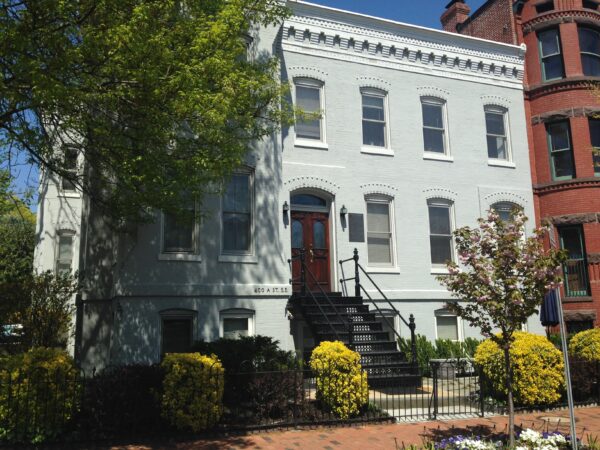
The AHA Townhouse
The recent death of Willie Lee Rose, a historian of the southern United States, led some in the AHA townhouse to pass around a copy of the 1970 Report of the American Historical Association Committee on the Status of Women, better known as the Rose Report. Nicknamed for the committee’s chairman—Rose had no truck with “chairwoman” or even “chair”—it makes for gripping reading. With the AHA’s summary of the findings of this year’s survey on sexual harassment appearing in this issue (the full report will be online at www.historians.org/sexualharassmentreport), it’s worth rereading the Rose Report, not necessarily to praise the discipline for progress but to listen for any echoes that are still audible.
The starkest finding of the Rose Report wasn’t about the prevalence of sexual harassment; that term was still a few years away from being coined. What most concerned the committee was the very presence of women in the professoriate—or, more accurately, the decline in their ranks. Not surprisingly, the top 10 graduate-degree-granting departments hired very few women PhDs: “between 98 and 99 percent” of faculty members in these departments were men, with “the women serving primarily in the lower ranks.” And 5 of these 10 departments employed no women at any level.
“Most startling” to the committee, however, was the “progressive deterioration” of women’s status in coeducational liberal arts colleges. In the 10 years from 1959–60 to 1968–69, the number of women at the rank of full professor in these institutions declined, from 16 percent of the total to nearly 0: “only one woman full professor remained, and she retired the following year.” Although the number of women assistant professors was rising, there had also been a decline in women at the rank of associate professor.
Undeniably, women had always earned many fewer history PhDs than men had. But they had found positions in the professoriate in greater numbers during the 1920s and ’30s. This generation of women historians was retiring throughout the 1960s, a wave that was not replaced in the 1940s and ’50s.
It’s a familiar story to historians of the 20th-century United States: in postwar ideology, middle-class women who had jobs were misfits, especially if they were married and had children. Men somehow deserved jobs—they were family breadwinners, they were better qualified, and women only toyed at careers before they became pregnant and left the workforce of their own natural inclinations.
Citing recent social science studies, the Rose Report demolished these ideas. Women academics were just as qualified, and those who were married and worked full time published more than men and unmarried women did. But while married academic women didn’t retreat to “pure domesticity,” “their very eagerness to work has made [them] vulnerable to exploitation.” Wanting to work and needing to earn money led women to “accept irregular and part-time positions” that in turn justified their exclusion from professional “rewards and preferment.”
A great deal has changed since 1970. According to AHA research, there is no disparity today in the gender breakdown of PhDs finding academic employment. Women are prominent in the Association’s leadership. But as of August 2018, AHA membership skewed soundly toward men—58.4 percent, compared to 41.5 percent women. (Some members are gender nonconforming, while others preferred not to identify their gender.)
As we try to avoid whiggish history—in which things get better and better—so we should avoid seeing women’s progress in the discipline as irreversible. As former AHA assistant director Noralee Frankel pointed out in 2010: “The gains for women that we take for granted can be lost.” One of the legacies of the Rose Report is that if things have gotten better for women in history—and in the AHA—it’s because women themselves have made them so.
This work is licensed under a Creative Commons Attribution-NonCommercial-NoDerivatives 4.0 International License. Attribution must provide author name, article title, Perspectives on History, date of publication, and a link to this page. This license applies only to the article, not to text or images used here by permission.
